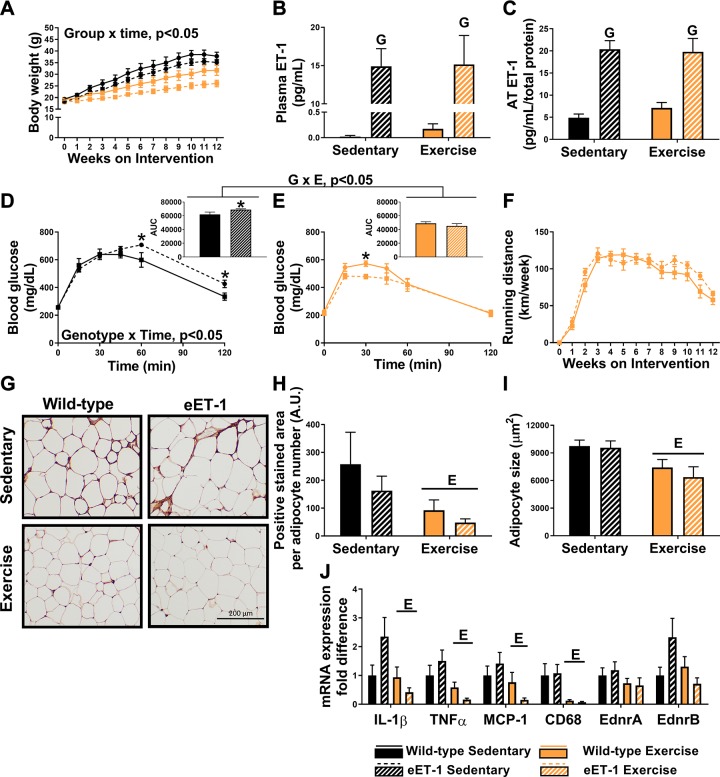Fig. 2.
Downregulation of endothelin-1 (ET-1) is not compulsory for exercise-induced amelioration of visceral adipose tissue (AT) inflammation and improvements in glucose control. A: body weight growth curves over 12 wk of the intervention. B: plasma ET-1 concentrations. C: ET-1 concentrations in epididymal AT. D and E: glucose tolerance test with area under the curve (AUC) conducted at 10 wk of intervention in sedentary and exercise-trained male mice, respectively. F: mean wheel running distance throughout the 12-wk intervention. G: macrophage marker MAC-2 immunostained epididymal adipose sections. Magnification ×20 with ×10 objective. H: average positive MAC-2-stained area. I: average adipocyte size per 100 cells. J: expression of inflammatory genes in epididymal AT (exercise × genotype interaction P values: IL-1β, P = 0.064; TNFα, P = 0.165; MCP-1, P = 0.146; CD68, P = 0.8186; EdnrA, P = 0.621; EdnrB, P = 0.051). Values are means ± SE; n = 7–12/group. “E” indicates P < 0.05, main effect of exercise. “G” indicates P < 0.05, main effect of genotype. “G × E” indicates P < 0.05, genotype × exercise interaction. *P < 0.05 vs. wild-type. A two-way ANOVA (exercise and genotype as factors) with Fisher’s least-significant difference post hoc for pairwise comparisons was used. In addition, a repeated measures two-way ANOVA was used to assess group × time interactions for weekly body weight.

